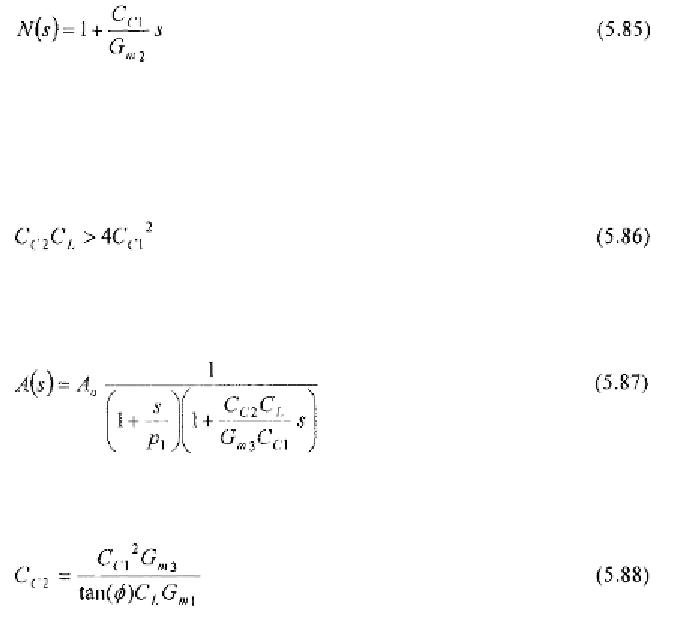Environmental Engineering Reference
In-Depth Information
Setting
(5.84) becomes
yielding only one negative zero. Of course, the denominator of the open-loop
gain is still the same as in (5.78). In this case, it is convenient to have
As we shall show, this choice allows a pole-zero cancellation to be
achieved. Indeed, assuming that also
meaning that the determinant of the second order factor of (5.78) is positive,
it follows that all poles are real and thus (5.78) becomes
For a given phase margin we get
Now, by substituting (5.88) in (5.86), condition (5.86) is satisfied if
Since a phase margin of about 60° is generally required,
it follows that the transconductance of both the second and third stage must
be at least seven times greater than the transconductance of the first stage.
Since transconductances are usually set by other kinds of specifications, the
application of this technique is implicitly limited.
5.5.3 RHP Cancellation with One Real Voltage Buffer
To achieve RHP cancellation, we can efficiently make use of only one
voltage buffer in the inner loop, as shown in Figure 5.18.




